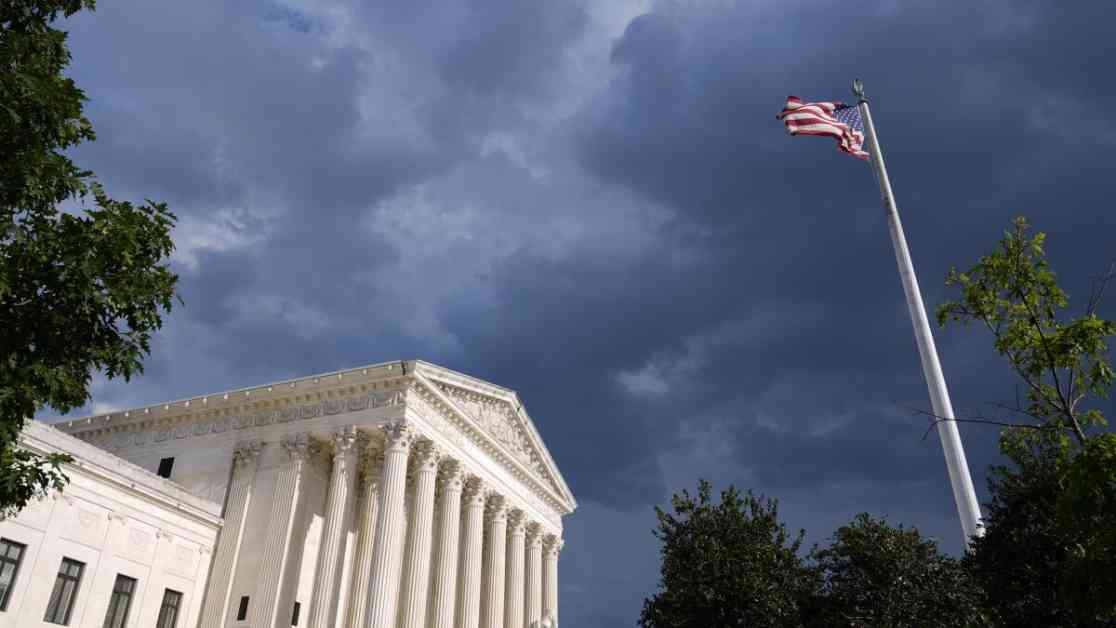Supreme Court Blocks Biden’s Plan to Reduce Student Loan Debt
The Supreme Court has delivered a significant blow to President Biden’s efforts to reduce student loan debt, putting a halt to his plan to lower monthly payments for millions of borrowers and cancel loans after 20 years. The decision comes after a U.S. appeals court in St. Louis blocked the administration’s proposal from taking effect, pending further review.
Legal Battle Over Student Loan Relief
The legal battle over student loan relief began when Republican attorneys general from Missouri and 10 other states filed a lawsuit to block Biden’s plan, arguing that it was too costly and exceeded the authority granted by law. District judges in Kansas and Missouri ruled in favor of the states, leading to a nationwide order from the 8th Circuit Court in St. Louis preventing the Education Department from moving forward with the debt forgiveness program.
The Biden administration had argued that the proposed policies, which adjust borrowers’ payments based on income and allow for loan forgiveness after 20 years, were in line with provisions of the Higher Education Act that have been in place for decades. Solicitor Gen. Elizabeth Prelogar urged the Supreme Court to lift the nationwide order or narrow its scope, but the justices decided to leave it in place for the time being.
Historical Context of Student Loan Relief Efforts
This is not the first time the Supreme Court has weighed in on student loan relief efforts by the Biden administration. Last year, a 6-3 ruling struck down a plan to forgive millions of student loans in response to the COVID-19 pandemic. The justices determined that Congress had not authorized a “mass debt cancellation program” that was projected to cost the government billions of dollars.
Despite setbacks in the courts, President Biden has remained committed to finding ways to provide relief to struggling borrowers. In April, the White House announced a new set of student debt relief plans that would save about 30 million borrowers billions of dollars in total. One of these programs, known as the SAVE Plan, aimed to reduce payments for 8 million borrowers, with 4.5 million of them having a monthly payment of $0.
President Biden’s Determination to Help Student Borrowers
Despite challenges from the courts, President Biden has continued to push for student loan relief, emphasizing the importance of easing the financial burden on millions of Americans. At a rally in May, he expressed his determination to keep working towards debt relief, stating, “The Supreme Court tried to block me from relieving student debt. But they didn’t stop me. I’ve relieved student debt for over 5 million Americans. I’m going to keep going.”
The ongoing legal battles and setbacks in implementing student loan relief programs have highlighted the complexities and challenges of addressing the growing student debt crisis in the United States. As the Biden administration continues to navigate these obstacles, the future of student loan relief remains uncertain.
Impact on Student Borrowers and the Economy
The Supreme Court’s decision to block President Biden’s plan to reduce student loan debt has significant implications for millions of borrowers and the broader economy. With student loan debt reaching unprecedented levels in the United States, the need for relief has never been more urgent.
For many borrowers, the prospect of having their monthly payments reduced or their loans forgiven after 20 years was a lifeline in the midst of financial hardship. The uncertainty surrounding the fate of these relief programs has left many wondering how they will manage their debt and plan for their financial future.
The economic impact of student loan debt is far-reaching, affecting not only individual borrowers but also the overall health of the economy. High levels of student debt can hinder young adults from buying homes, starting families, or pursuing entrepreneurial ventures, ultimately slowing down economic growth and innovation.
As policymakers and advocates continue to push for solutions to the student debt crisis, the Supreme Court’s decision serves as a reminder of the legal and political challenges involved in implementing meaningful relief measures. The road ahead may be fraught with obstacles, but the need for action remains as urgent as ever.
Future of Student Loan Relief Efforts
Despite the setbacks faced by the Biden administration in implementing student loan relief programs, efforts to address the growing crisis are far from over. As the legal battles continue to unfold in the courts, policymakers and advocates are exploring alternative solutions to provide relief to struggling borrowers.
One potential avenue for relief is through legislative action, with lawmakers considering proposals to reform the student loan system and provide targeted relief to those most in need. Advocates are also calling for broader reforms to make higher education more affordable and accessible, reducing the need for students to take on large amounts of debt in the first place.
The Biden administration remains committed to finding ways to provide relief to student borrowers, despite the challenges posed by legal obstacles and political opposition. As the debate over student loan debt continues to unfold, the need for meaningful solutions that address the root causes of the crisis has never been more pressing.
In conclusion, the Supreme Court’s decision to block President Biden’s plan to reduce student loan debt highlights the complexities and challenges of addressing the growing crisis in the United States. As policymakers, advocates, and borrowers continue to push for relief, the road ahead remains uncertain, but the need for action is clear.



























